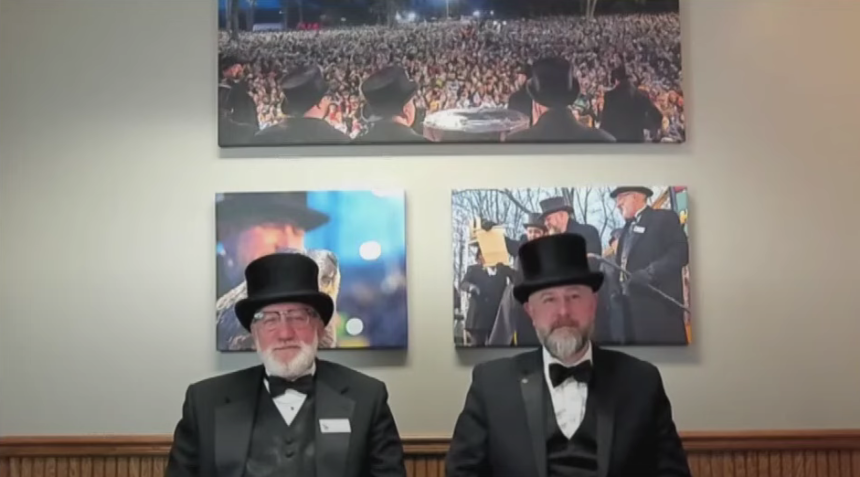Every year on February 2, thousands gather at Gobbler’s Knob in Punxsutawney, Pennsylvania, awaiting the famous Punxsutawney Phil’s weather prediction. This age-old tradition, dating back to 1887, has become a national spectacle, attracting visitors, media coverage, and even controversies. In 2025, Phil emerged from his burrow and saw his shadow, predicting six more weeks of winter. This revelation, as always, was met with both cheers and groans, with many hoping for an early spring.
The History and Origins of Groundhog Day
Groundhog Day has its roots in Candlemas, a European tradition where clergy would bless and distribute candles for winter. German immigrants brought the tradition to the United States, replacing badgers with groundhogs as the animal predicting the weather. According to legend, if the groundhog sees its shadow, it means six more weeks of winter; if not, spring will arrive early. The first official Groundhog Day celebration in the U.S. took place in Punxsutawney, Pennsylvania, in 1887, making it one of the oldest weather prediction events in the country.
Punxsutawney Phil’s 2025 Prediction
On the chilly morning of February 2, 2025, thousands gathered before dawn at Gobbler’s Knob to witness Phil’s forecast. The excitement built up as the handlers of the Punxsutawney Groundhog Club ceremoniously pulled Phil from his burrow. As the cameras flashed and the crowd roared, the furry forecaster saw his shadow, signaling six more weeks of winter.
Phil’s accuracy, however, has been a topic of debate. While official records claim he has an 80% success rate, meteorologists argue that his predictions are only right about 39% of the time. Nevertheless, for many, Groundhog Day is less about accuracy and more about tradition, fun, and community celebration.
Modern-Day Popularity and Celebrations
Despite the rise of technology and scientific weather forecasting, Groundhog Day remains an integral part of American culture. The event is broadcast live across various news networks, with millions watching Phil’s prediction unfold.
The Punxsutawney Groundhog Club organizes a multi-day festival featuring parades, music, entertainment, and historical exhibits. In recent years, the celebration has expanded beyond Pennsylvania, with other cities and states adopting their own groundhog-based weather traditions. Some of the most notable ones include:
- Staten Island Chuck (New York)
- Buckeye Chuck (Ohio)
- General Beauregard Lee (Georgia)
- Wiarton Willie (Canada)
The Controversy Surrounding Groundhog Day 2025
While many cherish the tradition, animal rights organizations like PETA have long criticized the use of a live groundhog for weather forecasting. This year, PETA proposed replacing Phil with a “vegan weather-reveal cake”, where a blue filling would symbolize six more weeks of winter, and a pink filling would indicate an early spring.
The proposal sparked a heated debate. Pennsylvania Governor Josh Shapiro dismissed the idea, stating, “Groundhog Day is a proud Pennsylvania tradition that will continue as it has for generations.” Many locals also opposed the change, arguing that Punxsutawney Phil is well cared for and lives a comfortable life.
Animal rights activists, however, insist that forcing Phil to endure bright lights, loud crowds, and cold weather for entertainment is unnecessary and outdated. The controversy has led to renewed discussions about modernizing traditions while maintaining their cultural significance.
The Cultural Impact of Groundhog Day
Beyond the weather prediction, Groundhog Day has become a pop culture phenomenon, largely thanks to the 1993 film “Groundhog Day” starring Bill Murray. The movie, where the protagonist relives the same day repeatedly, has turned into an allegory for self-improvement and second chances.
In 2025, the movie remains widely popular, with multiple streaming platforms making it available for rental or free streaming during Groundhog Day week. Prime Video, Apple TV, YouTube, and Fandango are among the platforms where viewers can relive the classic.
The term “Groundhog Day” has also become synonymous with repetitive experiences, often used in political and cultural conversations.
Phil’s Record: How Accurate is He?
Phil’s long history of weather forecasting raises an essential question: How accurate is he? According to meteorologists, Phil has an accuracy rate of about 39%, meaning his predictions are often incorrect. However, for many, Groundhog Day is less about science and more about tradition and fun.
Comparing Phil’s forecasts to actual weather patterns over the years, studies have shown that he has been correct only a little more than one-third of the time. While modern weather forecasting methods are far more accurate, they lack the charm, mystery, and folklore that Phil brings each year.
Economic and Tourism Impact
Groundhog Day has significant economic benefits, especially for Punxsutawney, Pennsylvania. The town, with a population of just over 5,000, experiences a surge in tourism during the Groundhog Day festival. Hotels, restaurants, and local businesses thrive during this period, bringing in millions of dollars in revenue.
The tradition also impacts merchandising, with everything from Groundhog Day-themed clothing, mugs, and stuffed animals being sold worldwide. Streaming services and movie rentals also experience a boost as audiences revisit the classic Bill Murray film.
Future of Groundhog Day
As technology and awareness evolve, so does the discussion surrounding Groundhog Day’s future. Some believe that the tradition should be preserved as it is, while others argue that more humane, modern approaches should be considered. The debate on whether Phil should be replaced with an AI-driven weather predictor or a symbolic forecast method continues.
However, despite criticisms and changing times, Groundhog Day’s charm, nostalgia, and cultural significance remain strong. Whether people believe in Phil’s predictions or not, the event continues to bring people together, reminding them of the whimsical, unpredictable nature of weather, tradition, and folklore.
Conclusion
Groundhog Day 2025 has once again captured the attention of millions, blending tradition, fun, and controversy into an event that remains one of the most beloved folklore celebrations in America. From Punxsutawney Phil’s shadow sighting to PETA’s alternative cake proposal, the day has sparked conversations about tradition, animal rights, and weather forecasting accuracy.
As we head into the next six weeks of winter (or perhaps an early spring), one thing remains certain—Groundhog Day will continue to be an enduring part of American culture, drawing smiles, debates, and excitement for generations to come.






